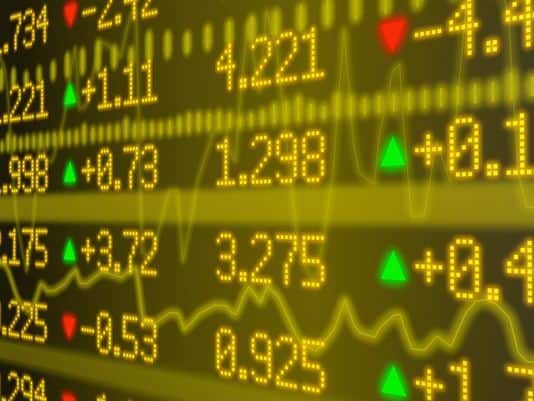
So the stock market once again has gone through the wringer. It won’t be the first sudden tumble and it won’t be the last. No two retreats are exactly the same, but most fit within certain patterns.
The details always are different, but common themes often repeat.
One thing to remember is that periodic market setbacks are part of the normal pattern, like steam that occasionally needs to vent from a simmering pot. On big down days, it’s easy to fear the worse and assume the avalanche will snowball, especially with memories of the roughly 50 percent plunge from 2007-2009 still fresh.
But usually, worst-case scenarios don’t materialize.
3 types of downturns
Market pullbacks can be placed into one of three distinct categories based on their severity, argues Jack Ablin, chief investment officer at Cresset Wealth Advisors.
The worst types are systemic downturns that coincide with a loss of confidence in a country’s financial or political systems, often with a near-complete drying up of credit and other severe ills.
The stock market crashes commencing in 1929 and 2007 were examples of these extreme downward movements, Ablin wrote in a recent report. Both required the adoption of extraordinary government policies to turn things around, including new financial regulations.
Fortunately, these types of plunges have been rare.
Cyclical downturns, the second type, also can be sharp but are triggered more by reasonably normal changes in the economic cycle.
“As expansions evolve, capacity for production and labor tighten up, putting upward pressure on prices and wages,” Ablin wrote. “Bond investors, anticipating increasingly aggressive monetary policy, push short-term rates above intermediate rates, creating an inverted yield curve.”
That’s a fancy way of saying credit tightens, lenders worry increasingly about defaults, and stocks tumble as profit forecasts get cut. Ablin places the bear market of 2000, triggered by the bursting of the internet bubble, in this camp.
The third type — technical pullbacks — are sharp, periodic slumps that bring stock prices back into line with earnings valuations and other measures. They’re often sparked by seemingly unrelated or seemingly insignificant factors.
Selling pressure, while intense for days or weeks, usually is confined to the stock market and dissipates reasonably quickly.
Ablin considers the latest slump to be a technical pullback.
“While it’s impossible to predict where the markets will meander on a day-to-day basis, we are confident that any pullback that plays out over the next few weeks represents a better opportunity to buy for the long run rather than a reason to sell,” he wrote.
Eventually, though, another cyclical downturn will materialize.
Things to remember about the market
In the latest swoon, traders suddenly reacted to hints that inflation and interest rates might be headed substantially higher. Plenty of people already were concerned that the stock-market rally had gone too far. Some thought, and still think, that the nine-year expansion phase of the economic cycle was nearing a peak.
But opposing these concerns are various other, highly positive trends and developments — factors that ultimately could get stock prices moving higher again.
The recent plunge came about “squarely in the face of an extremely impressive display of earnings power from corporate America,” wrote Sheraz Mian, research director at Zacks Investment Research. “Estimates for earnings and cash flows are going up at a pace that we haven’t seen in years” but that have been ignored recently, he wrote.
“While the stock market had a January meltup followed by a February meltdown, earnings estimates continued to melt up,” added Yardeni Research in a commentary.
The impact of lower corporate income-tax rates won’t be fully reflected in profit numbers for perhaps another year, which will provide a tailwind for stock prices, the company predicts.
Even higher interest rates and inflation aren’t necessarily all that bad for the stock market, as they’re starting from very low levels. Also, both tend to rise when the economy is humming.
When yields on benchmark 10-year Treasury notes are below 5 percent, as is currently the case, rising interest rates historically have coincided with higher stock prices, reports JPMorgan Asset Management.
Keeping perspective: Scale matters
Another reason the recent stock-market swoon seemed scary is that the numbers today are so much bigger than in decades past.
A drop of 1,000 points with the Dow Jones Industrial Average around 25,000 is similar in percentage terms to a 100-point decline years ago when the Dow traded around 2,500. The 1,175-point drop on Feb. 5 was the largest ever in point terms but ranked just 108th in percentage terms, noted Jeremy Kisner of Surevest Wealth Management in Phoenix.
Also, a lot of people forgot what sharp downward volatility felt like, following an abnormally long stretch of smooth, steady gains that characterized most of the past couple of years.
Investors got used to dull days when the market drifted mostly higher. The latest decline jolted everyone awake.
These types of moves — declines of 10 percent or greater — historically have occurred about once a year on average, meaning they’re fairly common.
“I think of market corrections as being like getting a haircut,” wrote Kisner. “Even if you want to grow your hair long, you need to get the split ends trimmed occasionally.”
After a correction, stocks typically look a lot better in terms of having lower, more-attractive valuations — not unlike investors who look better after getting their sideburns trimmed or neck hair shaved.
